By Alex Trukan
It is often said that the team in possession dictates play and makes the opposition react. It is true if the defending team doesn’t take initiative to force play and guide the attacking team to make the defending easier. That requires great communication between players, understanding responsibilities of the units as well as compactness and organisation of the whole team. The benefits are clear, forcing the attackers to attack in a certain way will make the defending more predictable and therefore easier to prepare and organise.
When one of the centre backs is in possession, the role of the forwards unit is to guide play towards one vertical half of the pitch. That can be achieved by appropriate starting positions and approach to press. Midfield unit tries to mark, cover and screen opposition midfielders.
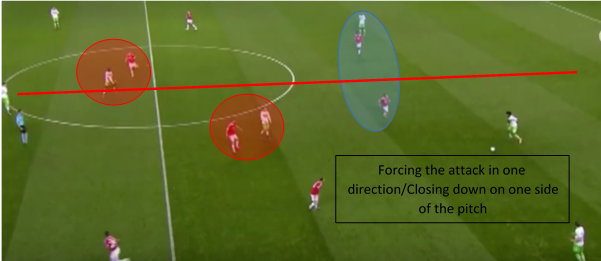
As one of the strikers presses the ball, second one cuts the option to switch the play to the other centre back what makes the play more predictable. The wide midfielder is positioned narrow to be able to press from inside-out to block the option to play centrally.
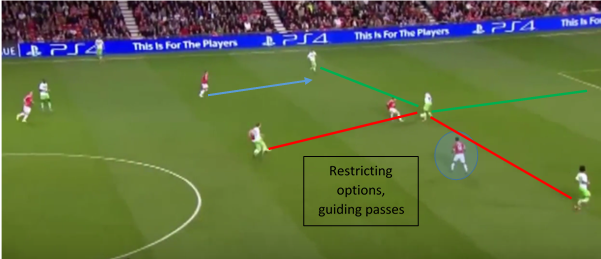
As soon as the ball is played to the full back, the whole team narrows up and moves as a compact unit towards one side of the pitch. It is important to mark tightly the options where the team doesn’t want the opposition to go and open up possibilities which will be pressing traps.
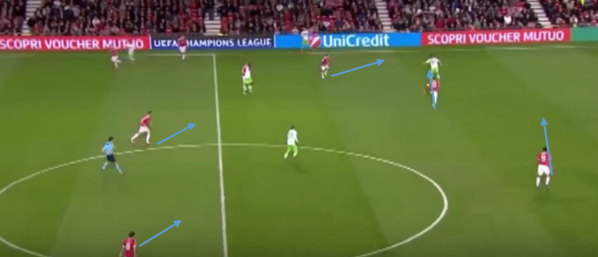
As we can see below, the player on the ball doesn’t have a variety of options what constraints his decision making and forces in certain direction. Forwards block the back pass, midfielders mark and cover the central spaces, whereas defenders press the ball and cover spaces in behind.
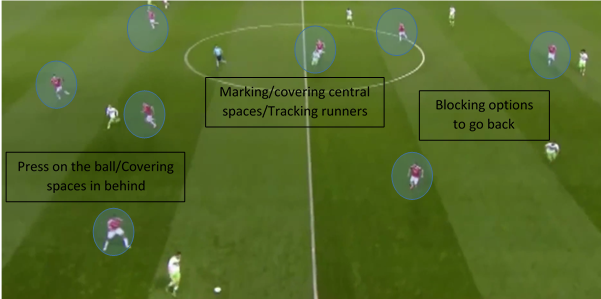
Apart from the pressing traps and trying to regain the ball in certain areas, the team might use pressing triggers which are pictures in the opposition play that start the pressing of the whole team. One of the most popular is when the opposition player receives the ball facing his own goal.
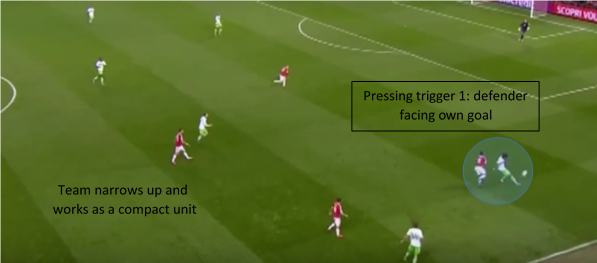
Another one happens when the opposition player has a difficult pass to receive (ex. aerial, bouncing, misplaced). That usually happens in wide areas and triggers pressure being applied on the full backs.
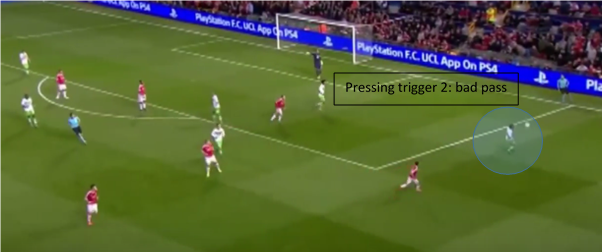
Finally, ball being played back to the goalkeeper might be also a great opportunity to push up, press him and force to play long and high pass which is easier to defend than from controlled possession with no pressure applied.
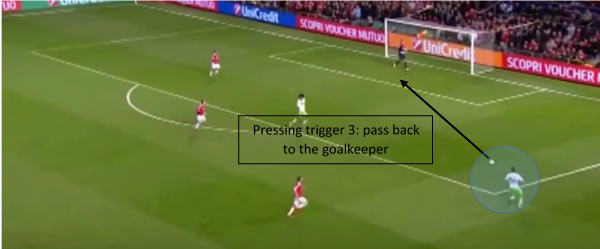
Forcing play when out of possession is a strategy that requires not only good individual qualities (1v1 defending, intelligence, predicting play) but also cooperation and organisation of the whole team. Really important part of it is communication (especially from the strikers), working off triggers as well as having a plan B in case the opposition gets out of the trap.
By Alex Trukan, Development Coach, Nottingham Forest
@AlexTrukan


